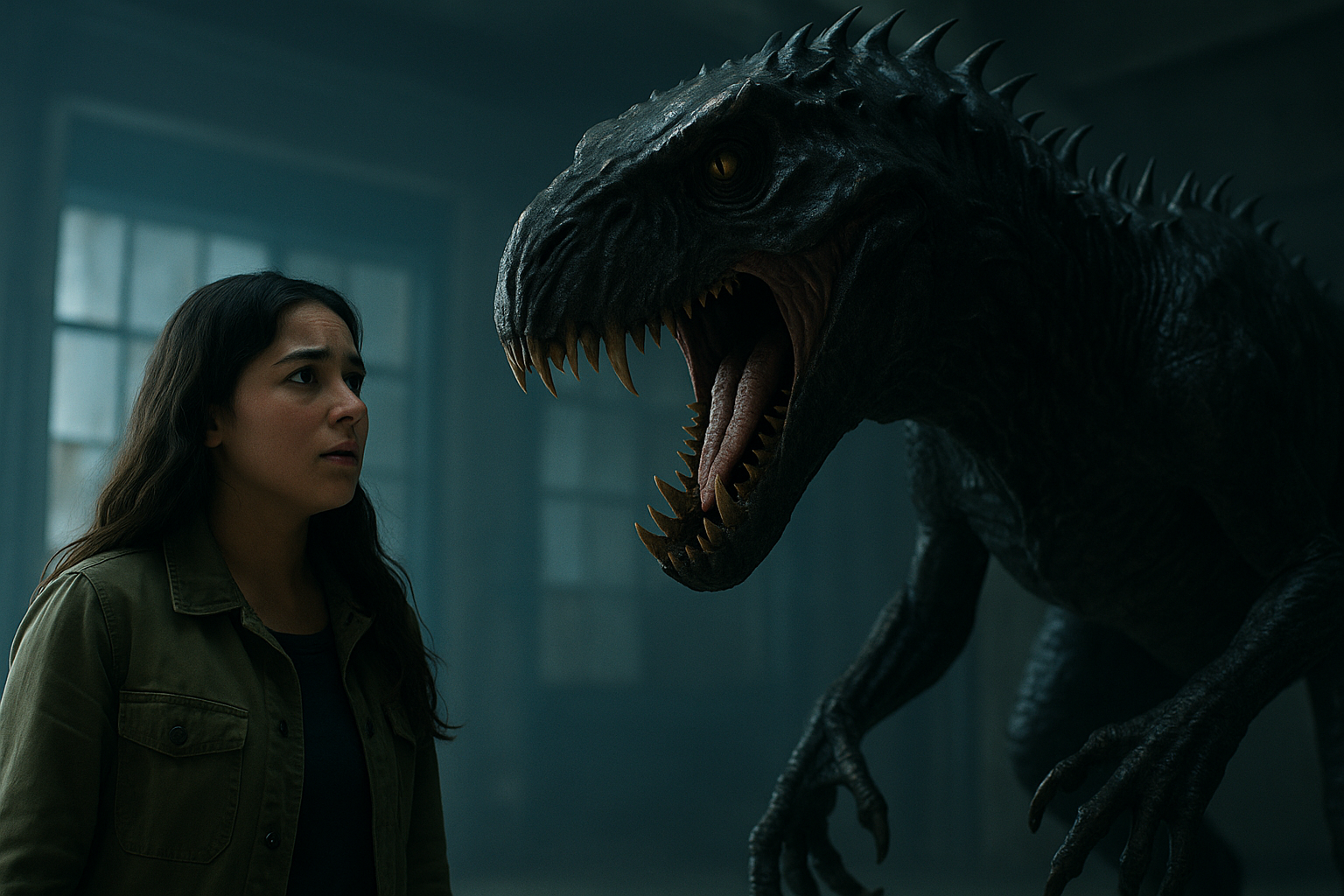Jurassic World: Rebirth is roaring into cinemas with a bang, and the biggest buzz around the movie revolves around its terrifying new creation: the Distortus rex, or D-Rex. This mutant hybrid dinosaur has shocked fans not just with its ferocious appearance, but also with the emotional complexity behind its character. Director Gareth Edwards recently opened up about the inspiration behind the D-Rex, giving us a rare look into how this cinematic monster came to life.
What is the D-Rex in Jurassic World: Rebirth?
Unlike traditional dinosaurs depicted in the franchise, the D-Rex is a genetically engineered hybrid, designed to be both terrifying and tragic. Its name — Distortus rex — hints at its distorted genetics and warped anatomy. The D-Rex stands as a successor to earlier hybrids like Indominus rex, Indoraptor, and Scorpios rex, continuing the theme of man-made evolutionary monsters that blur the line between science and ethics.
According to Jurassic Park Wiki, hybrid dinosaurs are “genetically engineered dinosaurs that are made of more than one dinosaur species, which did not exist in the paleontological record.” These creations are exclusive to the franchise and have become a signature of the modern Jurassic World films.
The Inspirations Behind the Monster
In a recent interview with Screen Rant, Gareth Edwards revealed that the design of the D-Rex drew influence from iconic cinematic creatures like the Xenomorph from Alien and the Rancor from Star Wars. But the vision wasn’t just about horror and power.
Edwards went on to explain, “I was like, ‘Okay, go rewatch David Lynch’s The Elephant Man.‘ It was this idea of someone who didn’t choose for this to happen to them. You might be afraid of them and want them gone, but you start to feel a bit of empathy.”
That’s right — beneath the fearsome roar and monstrous form, the D-Rex carries an emotional weight. Designed to breathe heavily, walk awkwardly, and appear as if it’s suffering, the D-Rex forces viewers into a conflict of fear and sympathy. It’s not just a beast — it’s a victim of genetic manipulation.
A Franchise Evolving with Mutant Dinosaurs
While some long-time fans express nostalgia for the original T-Rex and Velociraptors, others are embracing the new hybrid era with open arms. The D-Rex marks a turning point in the franchise — not just in design, but in narrative direction.
Mutant dinosaurs first made their way into the franchise prominently with the Jurassic Park: Chaos Effect toyline and later in Jurassic World (2015) with Indominus rex. Each sequel has since pushed the boundaries of imagination and science-fiction further, and the D-Rex is the latest (and possibly the most unsettling) evolution.
Fan Reactions: Mixed but Passionate
As expected, the introduction of the D-Rex has sparked a wave of online debates. While some fans appreciate the innovation and emotional depth added to the creature, others feel the franchise is straying too far from the roots of dinosaur realism.
“Just found out that Jurassic World: Rebirth will have a mutant dinosaur that’s just created for the film. I really thought we were done with this ‘dinosaur antagonists just created for the film’ crap after Fallen Kingdom,” one disappointed fan tweeted.
But many others are praising the originality. For them, the D-Rex is not just another monster — it’s a symbol of human hubris and scientific overreach, perfectly fitting the series’ cautionary themes.
Luna Blaise Joins the Adventure
Adding to the excitement, Jurassic World: Rebirth also introduces a new cast, including Luna Blaise, whose performance in a pivotal scene has already become a highlight. Her character is seen interacting with the D-Rex in what’s being called one of the most intense scenes in the film.

What’s Next for the Franchise?
Jurassic World: Rebirth is the seventh film in the series but also the first in a rebooted timeline with a new cast and direction. The success of the D-Rex could shape the narrative of future sequels, possibly introducing even more ethically ambiguous hybrid creatures. Edwards’ unique blend of sci-fi horror and emotional storytelling may well set the tone for the next era of Jurassic storytelling.
As mutant dinosaurs evolve beyond simple antagonists into complex, tragic beings, one thing is clear: the Jurassic World franchise isn’t extinct yet — it’s mutating.
Aviation Safety Review: 2 Parliamentary Panels Launch Today
